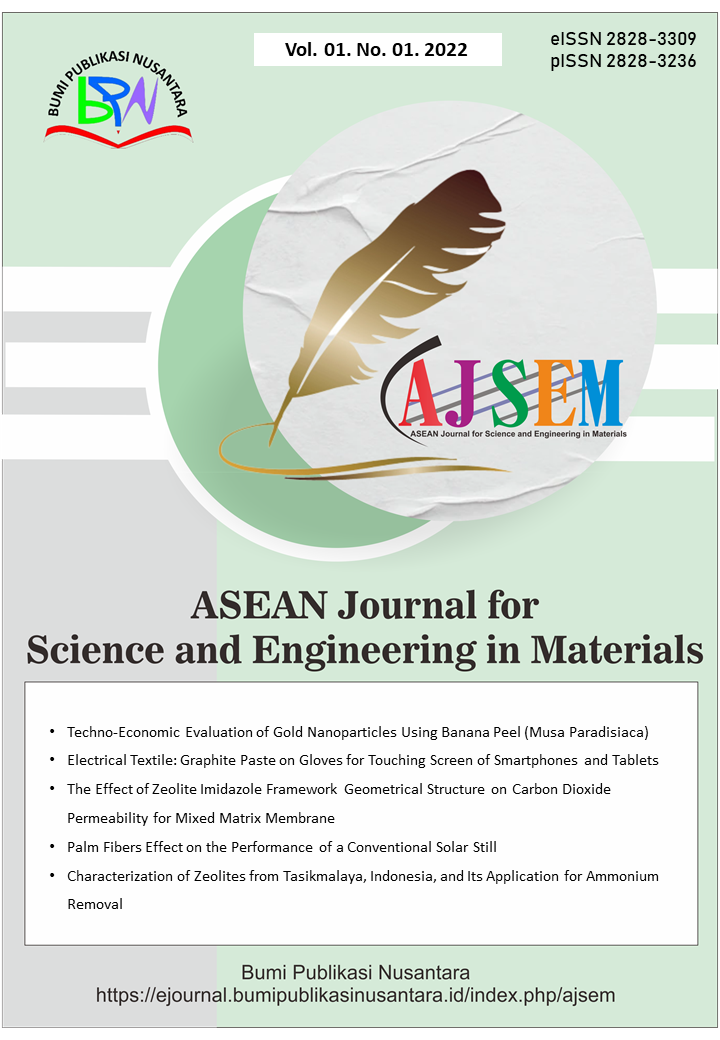Why 200°C is Effective for Creating Carbon from Organic Waste (from Thermal Gravity (TG-DTA) Perspective)?
 ), Asep Bayu Dani Nandiyanto(2),
), Asep Bayu Dani Nandiyanto(2),
(1) Universitas Pendidikan Indonesia
(2) Universitas Pendidikan Indonesia
 Corresponding Author
Corresponding Author
Abstract
Keywords
References
Bach, Q. V., and Chen, W. H. (2017). Pyrolysis characteristics and kinetics of microalgae via thermogravimetric analysis (TGA): a state-of-the-art review. Bioresource Technology, 246, 88-100.
Demirbas, A. (2004). Effect of initial moisture content on the yields of oily products from pyrolysis of biomass. Journal of Analytical and Applied Pyrolysis, 71(2), 803-815.
Nandiyanto, A. B. D., Arinalhaq, Z. F., Rahmadianti, S., Dewi, M. W., Rizky, Y. P. C., Maulidina, A., and Yunas, J. (2020b). Curcumin adsorption on carbon microparticles: synthesis from soursop (annonamuricata l.) peel waste, adsorption isotherms and thermodynamic and adsorption mechanism. International Journal of Nanoelectronics and Materials, 13, 173-192.
Nandiyanto, A. B. D., Girsang, G. C. S., Maryanti, R., Ragadhita, R., Anggraeni, S., Fauzi, F. M., and Al-Obaidi, A. S. M. (2020a). Isotherm adsorption characteristics of carbon microparticles prepared from pineapple peel waste. Communications in Science and Technology, 5(1), 31-39.
Nandiyanto, A. B. D., Hofifah, S. N., Inayah, H. T., Putri, S. R., Apriliani, S. S., Anggraeni, S., and Rahmat, A. (2021). Adsorption isotherm of carbon microparticles prepared from pumpkin (Cucurbita maxima) seeds for dye removal. Iraqi Journal of Science, 1404-1414.
Nandiyanto, A. B. D., Maryanti, R., Fiandini, M., Ragadhita, R., Usdiyana, D., Anggraeni, S., and Al-Obaidi, A. S. M. (2020c). Synthesis of carbon microparticles from red dragon fruit (Hylocereus undatus) peel waste and their adsorption isotherm characteristics. Molekul, 15(3), 199-209.
Nandiyanto, A. B. D., Putra, Z. A., Andika, R., Bilad, M. R., Kurniawan, T., Zulhijah, R., and Hamidah, I. (2017). Porous activated carbon particles from rice straw waste and their adsorption properties. Journal of Engineering Science and Technology, 12(8), 1-11.
Nandiyanto, A.B.D., Fadhlulloh, M.A., Rahman, T., and Mudzakir, A. (2016). Synthesis of carbon nanoparticles from commercially available liquified petroleum gas. IOP Conference Series: Materials Science and Engineering, 128(1), 012042.
Nandiyanto, A.B.D., Putra, Z.A., Andika, R., Bilad, M.R., Kurniawan, T., Zulhijah, R., and Hamidah, I. (2017). Porous activated carbon particles from rice straw waste and their adsorption properties. Journal of Engineering Science and Technology, 12, 1-11.
Nuria, F. I., Anwar, M., and Purwaningsih, D. Y. (2020). Pembuatan karbon aktif dari enceng gondok. Jurnal Tecnoscienza, 5(1), 37-48.
Permatasari, N., Sucahya, T. N., and Nandiyanto, A. B. D. (2016). Agricultural wastes as a source of silica material. Indonesian Journal of Science and Technology, 1(1), 82-106.
Rehman, Z. U., and Anal, A. K. (2019). Enhanced lipid and starch productivity of microalga (Chlorococcum sp. TISTR 8583) with nitrogen limitation following effective pretreatments for biofuel production. Biotechnology Reports, 21, e00298.
Sukarni, S., Widiono, A. E., Sumarli, S., Wulandari, R., Nauri, I. M., and Permanasari, A. A. (2018). Thermal decomposition behavior of water hyacinth (Eichhornia crassipes) under an inert atmosphere. In MATEC Web of Conferences, 204, 00010.
Article Metrics
Abstract View : 1235 times
: 1235 times Download : 918 times
Download : 918 times
Refbacks
- There are currently no refbacks.
Copyright (c) 2022 Bumi Publikasi Nusantara

This work is licensed under a Creative Commons Attribution-ShareAlike 4.0 International License.









